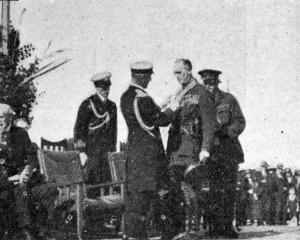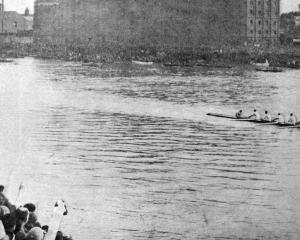The report of the commissioners who were appointed by the government to collect evidence in regard to the cause of the silting up and flooding of the Molyneux River from Barnego to the sea and to submit a scheme for the better protection of the surrounding country from floods, supplies a large amount of information of historical value. While the adoption of the principal scheme recommended by the commissioners would involve an expenditure estimated at as much as £165,000, it remains doubtful whether it would establish a permanent protection against floods. As has been shown in evidence the main causes of the silting up of the bed of the Molyneux from Balclutha to the sea are the deposits which enter the river in its upper reaches from mining operations and the denudation of the soil due to agricultural operations, the burning of tussock and the burrowing of rabbits. The chief features of the principal scheme recommended by the commissioners are the heightening of the existing levees by an average of about 6 ft, the raising and strengthening of the Balclutha Bridge, the continuation of the levees from the traffic bridge to the railway bridge, the creation of two diversions in the river,one in the vicinity of Stirling and the other nearby near Kaitangata, and the absolute exclusion of rabbits from the embankment .The commissioners’ recommendations made no mention of straightening the bends or of dredging the river from Balclutha to the sea. A scheme of this nature has been advocated by local engineers as a simple, effective and inexpensive solution of the problem but it is evident that it did not commend itself to the engineering minds of the commissioners.
Public telephone at Port Chalmers
Touching the question of a better telephone service between Port Chalmers and the City, the following telegram has been received by Mr J.M. Dickson MP from the Honourable E.P. Lee on behalf of the Postmaster-general:
‘‘In reference to your telegram of the 7th supporting the request of the Mayor of Port Chalmers that a coin in the slot telephone be installed without delay to provide for communication with Dunedin between the hours of 8 p.m. and 8 a.m., I have the honour to inform you that authority has been given for the installation of a slot telephone as desired.The charge will be 6d per call.’’
Toffee entrepreneur dies
Famous through the toffee which bears his name, Mr John Mackintosh died at Halifax while sitting at the bedside of his sick wife. Originally our factory operative, Mr McIntosh, who was 51, began to manufacture toffee when 21. He made it in a pan on the kitchen fire and his customers were the children of the neighbourhood. By commercial acumen and extensive and clever advertising he built up a business that is known throughout the greater part of the world.
Soldiers’ fiancees depart Britain
The steamer Mahana is taking 1000 girls to New Zealand, most of whom became engaged to New Zealand soldiers during the stay of the men in Britain. The New Zealand office is receiving a great number of applicants for passages for immigrants. The passenger accommodation is fully booked to September.
— ODT, 16.5.20.













